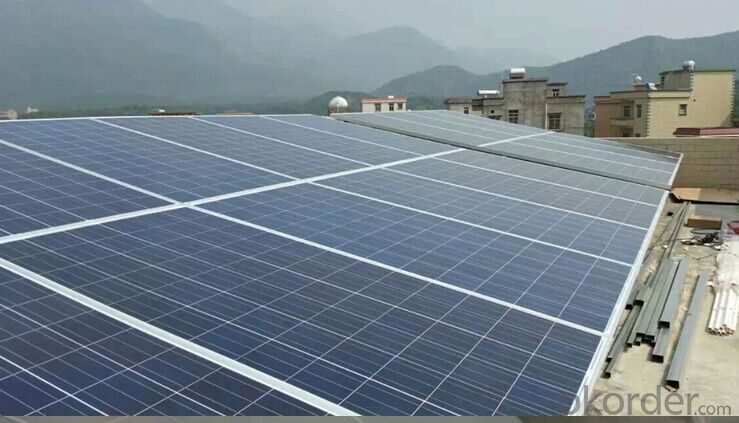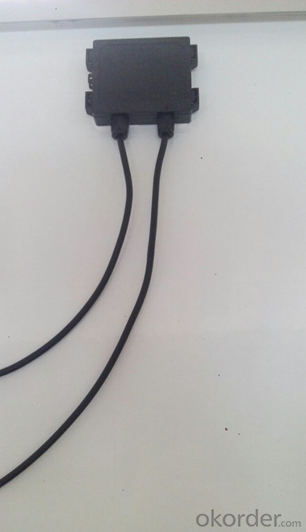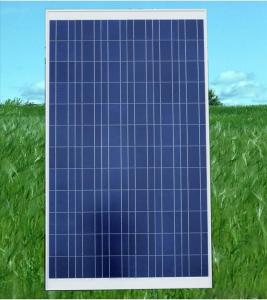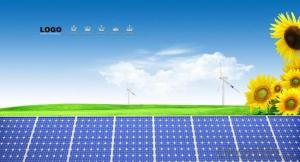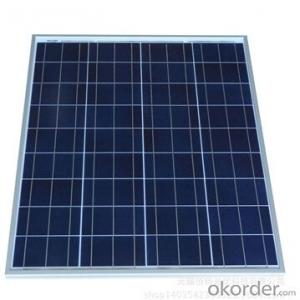250W Graphene Enhanced Poly Silicon Solar Module with High Quality CNBM
- Loading Port:
- Qingdao
- Payment Terms:
- TT OR LC
- Min Order Qty:
- 10 set
- Supply Capability:
- 300000 set/month
OKorder Service Pledge
OKorder Financial Service
You Might Also Like
Quick Details
| Place of Origin: | China (Mainland) | Brand Name: | CNBM | Model Number: | 285W solar module |
| Material: | Polycrystalline Silicon | Size: | 1956*992*50mm | Number of Cells: | 72 |
| Max. Power: | 285W | Cell Size(mm): | 156*156 | Tolerance: | 0~3% |
| Cells Number(pcs): | 6*12 | Weight(Kg): | 25 | Max.Series Fuse Rating (A): | 15 |
| Max.System Voltage-IEC(V): | 1000 |



Polycrystalline Solar Module
XH250P(72)/ XH275P(72)/ XH300P(72)
Models | XH250P(72) | XH285P(72) | XH300P(72) |
Max. Power (Pmax) | 250Wp | 285Wp | 300Wp |
Optimum Operating Voltage (Vm) | 34.8V | 35.7V | 35.9V |
Optimum Operating Current (Im) | 7.18A | 7.77 A | 8.08A |
Open-circuit Voltage (Voc) | 43.8V | 35.4 V | 44.4V |
Short-circuit Current (Isc) | 8.04A | 8.24 A | 8.62A |
Cells efficiency | 14.6% | 15.8% | 16.8% |
Dimension L×W×H (mm) | 1956×992×50mm | 1956×992×50 | 1956×992×50 |
Power Tolerance (Pmax) | 0 ~ +3% | 0 ~ +3% | 0 ~ +3% |
Numbers of cells | 60pcs poly solar cell 156×156mm | 72pcs poly solar cell 156×156mm | 72pcs poly solar cell 156×156mm |
weight | 25kg | 25kg | 25kg |
Max system voltage | 1000V DC | 1000V DC | 1000V DC |
Temperature cycling range | -40℃ ~ +85℃ | -40℃ ~ +85℃ | -40℃ ~ +85℃ |
- Q: Can solar cells be used for powering concert venues?
- Yes, solar cells can be used for powering concert venues. Solar cells, also known as photovoltaic cells, convert sunlight into electricity. Concert venues typically require a significant amount of energy for lighting, sound systems, and other equipment. By installing solar panels on the venue's roof or in nearby open spaces, the electricity generated can be used to power the venue. This not only reduces dependence on fossil fuels but also helps to lower energy costs and minimize the venue's carbon footprint.
- Q: What is the payback period for solar cells?
- The payback period for solar cells refers to the amount of time it takes for the cost of installing and maintaining solar cells to be recouped through the savings generated from reduced or eliminated electricity bills. Typically, the payback period for solar cells ranges from 5 to 10 years, depending on factors such as installation cost, energy consumption, government incentives, and regional sunlight availability.
- Q: Can solar cells be used to power electric vehicle charging stations?
- Yes, solar cells can be used to power electric vehicle charging stations. Solar panels can generate electricity from sunlight, which can be stored in batteries or directly used to charge electric vehicles. This renewable energy source can reduce reliance on the grid and contribute to a more sustainable and environmentally-friendly charging infrastructure.
- Q: Can solar cells be used in water?
- Yes, solar cells can be used in water, but they must be specifically designed for underwater use to ensure their functionality and durability.
- Q: Can solar cells be used for powering remote weather monitoring stations?
- Yes, solar cells can be used to power remote weather monitoring stations. Solar cells are a reliable and sustainable source of energy that can convert sunlight into electricity. They can be installed in remote areas where access to the power grid is limited or non-existent, providing a consistent power supply to operate weather monitoring equipment. Additionally, solar cells require minimal maintenance and have a long lifespan, making them a practical choice for powering remote weather monitoring stations.
- Q: Can solar cells be used for heating?
- Yes, solar cells can be used for heating. While solar cells primarily generate electricity from sunlight, they can also be employed in solar thermal systems to capture and convert sunlight into heat energy for various heating applications such as space heating and water heating.
- Q: Can solar cells be used in underwater vehicles?
- Yes, solar cells can be used in underwater vehicles. However, their efficiency may be reduced due to the limited availability of sunlight underwater.
- Q: What is the environmental impact of solar cell production?
- The environmental impact of solar cell production is relatively low compared to other forms of energy production. While the extraction and processing of raw materials required for solar cell production can have some environmental consequences, such as land disturbance and water pollution, the overall impact is minimal. Additionally, the use of solar energy reduces greenhouse gas emissions and dependence on fossil fuels, making it a sustainable and environmentally friendly option for energy generation.
- Q: Are solar cells environmentally friendly?
- Yes, solar cells are environmentally friendly. They generate electricity by harnessing the sun's energy, which is a clean and renewable source of power. Solar energy production does not produce greenhouse gas emissions, air pollution, or create hazardous waste. Additionally, solar cells have a long lifespan and can be recycled at the end of their life, minimizing their environmental impact.
- Q: What is the role of surge protectors in solar cell systems?
- The role of surge protectors in solar cell systems is to safeguard the system and its components from voltage spikes and power surges. They act as a protective barrier, absorbing excess voltage and diverting it away from sensitive equipment, such as solar panels, inverters, and battery systems. By preventing damage caused by electrical surges, surge protectors help to ensure the longevity and efficiency of solar cell systems.
Send your message to us
250W Graphene Enhanced Poly Silicon Solar Module with High Quality CNBM
- Loading Port:
- Qingdao
- Payment Terms:
- TT OR LC
- Min Order Qty:
- 10 set
- Supply Capability:
- 300000 set/month
OKorder Service Pledge
OKorder Financial Service
Similar products
Hot products
Hot Searches
Related keywords


